Sam Graham
This brief paper covers the changes in Cartersville’s fire service from 1867, when there was no fire department, until 1918, when the fire service included a municipal water system, full-time professional firefighters and a motorized engine; the basics of the system which is still in use today.
Early Years
In the years following the Civil War, the citizens of Cartersville were in the process of rebuilding upon the ashes left by Sherman’s troops. At 7:00 P.M. on January 4th, 1867, fire broke out in one of the buildings on Main Street, west of the railroad tracks. Several buildings were consumed by the flames, and the office of the local newspaper, the Express, which was in the path of the conflagration, was demolished in an attempt to stop the spread of the fire. The Express was soon back in business, and the issue of January 11, 1867 described the futile attempts of the citizens to fight the fire “without the aid of an engine and in the absence of an organized fire company”. On April 27, 1870, another fire occurred, destroying the entire block of buildings on the west side of the depot.[i] Cartersville was still in need of an effective fire department.
In 1873, the City purchased the lot at the corner of Erwin Street and Church Street, “with the view of erecting thereon a Fire Engine and Market House on the first floor, and a City hall and Council Chamber on the second…”.[i] A volunteer fire company was organized, a new hook & ladder was purchased, and a
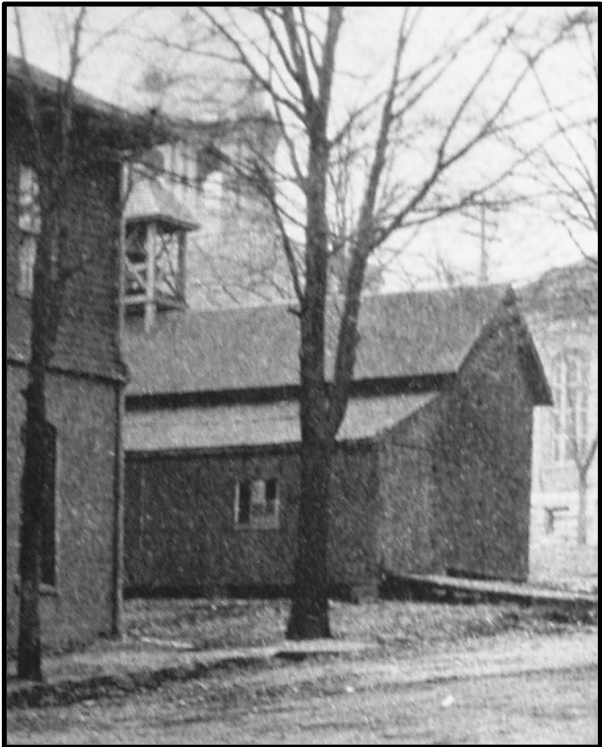
building erected on the lot for the storage of firefighting equipment. There was a bell tower, and in the event of a fire, the bell was rung to alert volunteers.[i] In February of 1877, the company had dissolved, turning over their equipment to the City Council. The Council immediately began efforts to organize another fire company.[ii] Over the next 30 years, interest in the department fluctuated, and there were several reorganizations. Lack of participation was a continual problem with the all-volunteer department,
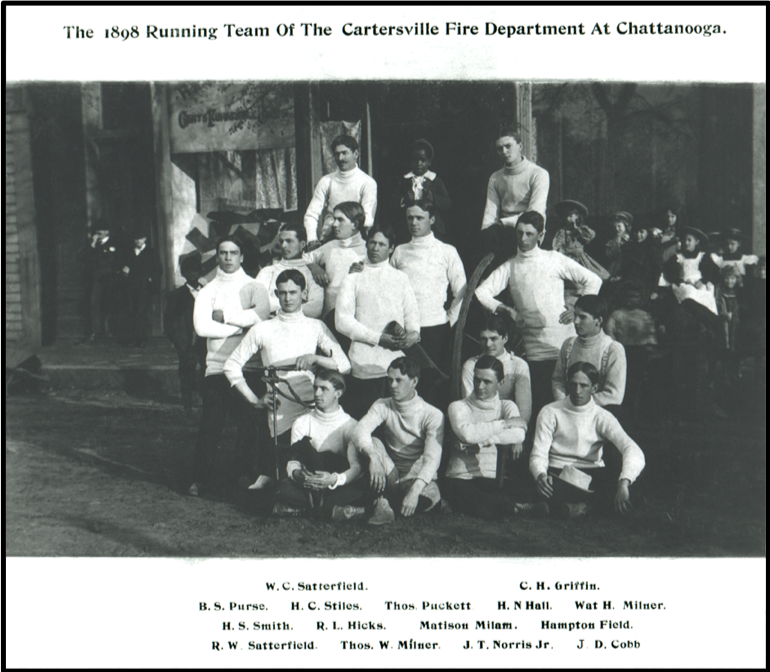
and local leaders attempted to stimulate interest with various social events, including meetings, banquets, parades and competitions, or “tournaments”, with other departments. In 1889, the City’s first water system was completed. Prior to this time, Cartersville’s water sources consisted of wells, cisterns and springs. The city never purchased a hand engine or steam engine, using only the hook & ladder, hose reels and hose carts; all hand-drawn equipment. With these conditions, and having to rely on volunteers exclusively, results were unpredictable. It wasn’t until 1909, when the city hired two men as firefighters, that an efficient & reliable firefighting force became a reality.
A Professional Fire Department
In August of 1905, the city council authorized the purchase of a wagon and two horses for the fire department.[i] The wagon, which would serve as a hose wagon, arrived in November, 1905. Built by G. W. Walker of Gainesville, Georgia, at a cost of $300, the wagon was to be stored in Bradley’s shop on West Main Street until a team of horses could be purchased.[ii] The wagon was still in storage, in the Anderson Livery stable, in November of 1908, when Sheriff T. Warren Tinsley traveled to Indianapolis, Indiana, & purchased a pair of horses. According to the Cartersville News, November 19, 1908, “They are a magnificent pair of dark bays, four and five years old, weighing twelve hundred pounds or more and measuring something like sixteen hands in height. Everybody who has seen them pronounces them a splendid pair of animals and seemingly fitted to the work.” The city rented a small building on Erwin Street, south of the Anderson Livery, from Dr. Thomas Baker to serve as a fire station. It was equipped with a “Hall’s patent harness”, which hung overhead, and was lowered onto the horses when the fire alarm sounded.[iii] The Council hired two men, Cartersville’s first paid firemen. They were Gideon W.
Hendricks, fireman, and Will Haney, driver. Living quarters were prepared in the rear of the station, and
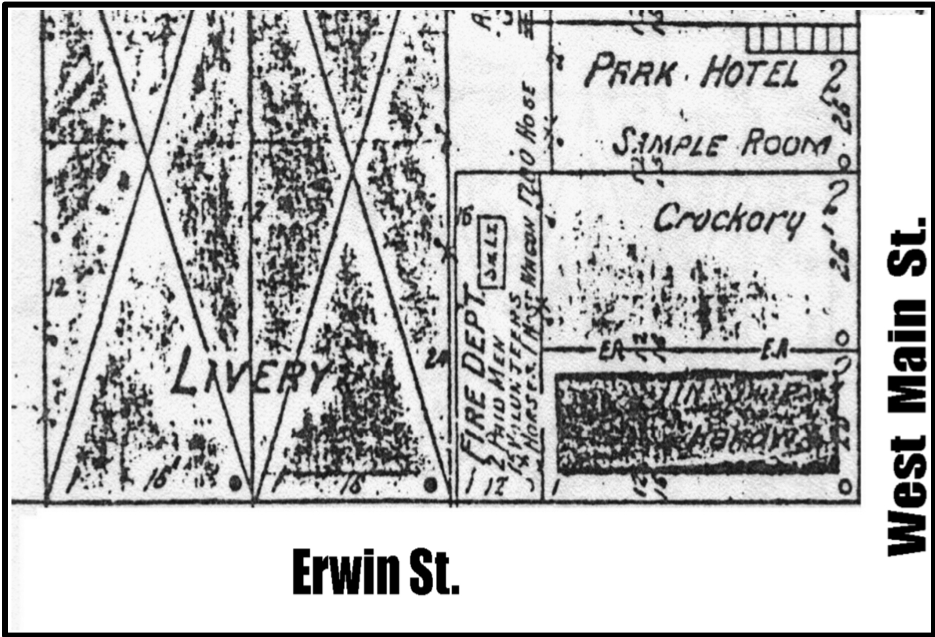
the firemen remained on duty around the clock.[i]
In February, a telephone was installed, and the City’s fire protection was made even more efficient. Residents now had only to dial 38 to report a fire. The two men on duty would respond immediately and begin fighting fire, receiving assistance from the volunteers who responded.[i] The wagon carried some 1200 feet of hose, ladders, chemical extinguishers (soda & acid) & tools.[ii] A hook & ladder was still in

service, as well as the hose reels. Presumably, these were still stored at the old Church St. station, given the limited space on Erwin Street.
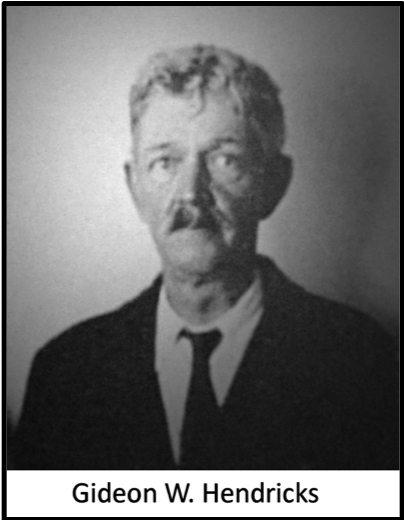
On April 1, 1909, the Cartersville City Council elected Gideon W. Hendricks the fire chief, making him Cartersville’s first professional fire chief.[i] Hendricks, age 31, only stayed with the department a few months, possibly a year. The 1910 census, taken in April, shows him living at the home of his father, Judge George W. Hendricks, on Bridge St. (Etowah Dr.), with the occupation of “brakeman”.[ii]
In 1910, Hoyt Hazlewood was hired as driver and Albert A. McEver as fireman.[iii] The photo of Hazlewood & McEver (below) illustrates the chemical extinguishers in use at the time. The gong located below the feet of the men, served as a warning, much the same as sirens on modern fire apparatus. Nothing certain is known about the two dogs pictured, but the Cartersville News of July 10, 1913, reported that, while en route to a fire, “the fire wagon ran over and killed ‘Blitz’ the pet dog of the fire boys. This was indeed a sad loss, as the little dog had been a pet around the fire house for the past four years and in the past few months had become so well trained as to run errands for the boys, such as bringing and carrying articles to and from the fire house which they desired sent or brought. The little dog was buried yesterday morning in the rear of the fire house building and numbers and numbers of people have called by and expressed their sympathy to the boys in the loss of their little pet.”
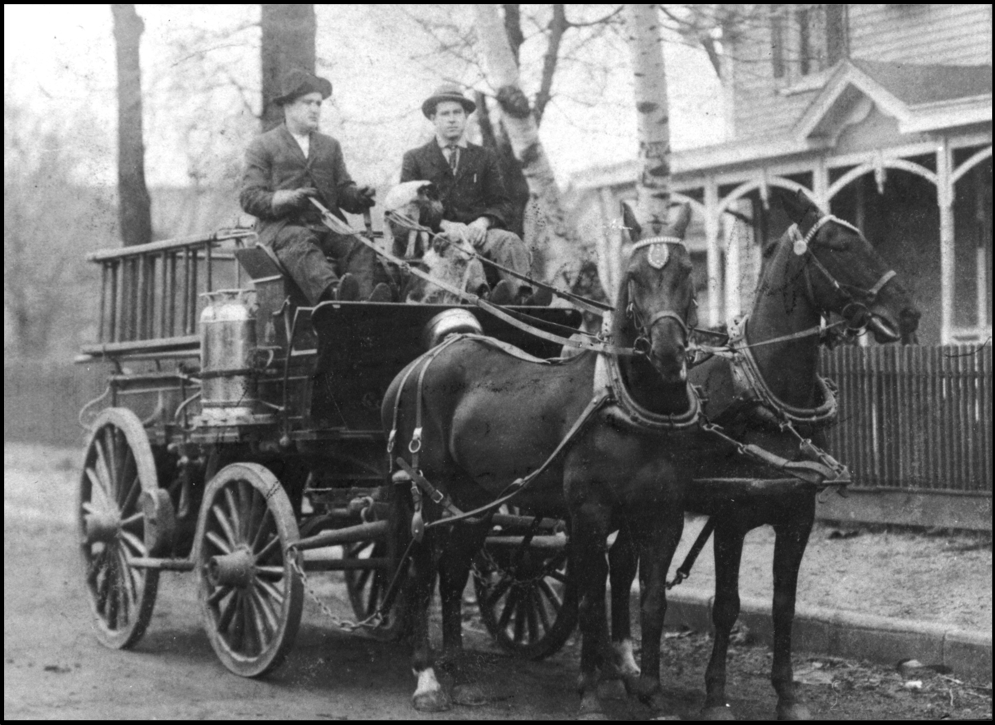
Bruce Wofford replaced McEver in 1911. His employment seems to have been cut short by an injury sustained while on duty. On Wednesday, June 14, 1911, while working in the feed room at the fire house, Wofford fell several feet and injured his left side.[i] He doesn’t appear on subsequent fire records for the year, and his position was filled by volunteer Henry Collins in January, 1913.[ii]
At a meeting of the fire department in February of 1911, Walter R. Satterfield was unanimously elected chief of the department. Satterfield was a veteran of the volunteer department, having been a member since the 1880’s, and having served in the position of chief in the 1890’s. He had also served the city as
alderman, as well as having interests in the mining industry.[iii]
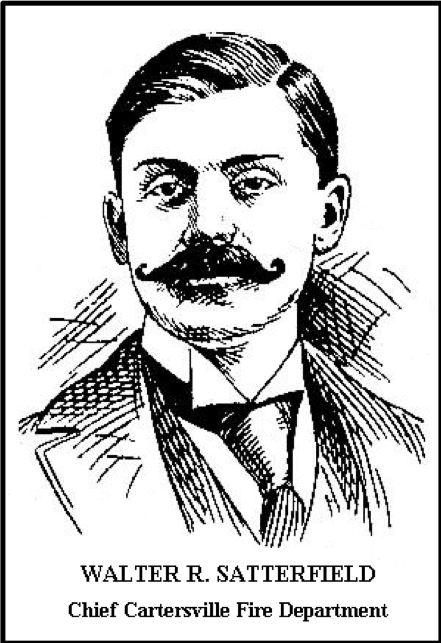
1914 began with Satterfield being reappointed to the position of chief, and Hazlewood & Collins as paid firemen.[i] Notable fires for the year were the almost total loss of Judge Watkins’ house on Douglas St., a fire at the Seaboard Depot and the Stanford Brothers’ store & bakery on Main St.[ii]
In February of 1915, the city of Chatsworth was in the process of organizing a fire department, and purchased from Cartersville one of the old hand reels. Chatsworth’s chief also expressed interest in the old hook & ladder, but the record is unclear as to whether he purchased it.[iii] It appears that the success of Cartersville’s fire department had rendered the old hand-drawn equipment from the all-volunteer days obsolete.
In the Spring of 1915, Cartersville received a reduction of 15% to 20% in its insurance rates when the City’s fire risk was reassessed by a representative of the Southern Underwriters Association.[iv] This was due in part to the two paid firemen and other improvements made in the fire department.
In 1916, Hoyt Hazlewood was named Fire Chief, a 2-year appointment.[v]
In May, 1917, the new City Hall building at the corner of North Erwin Street and West Church Street was completed. The fire department moved into the new building, but the horses and wagon would only occupy it for a few months.[i]
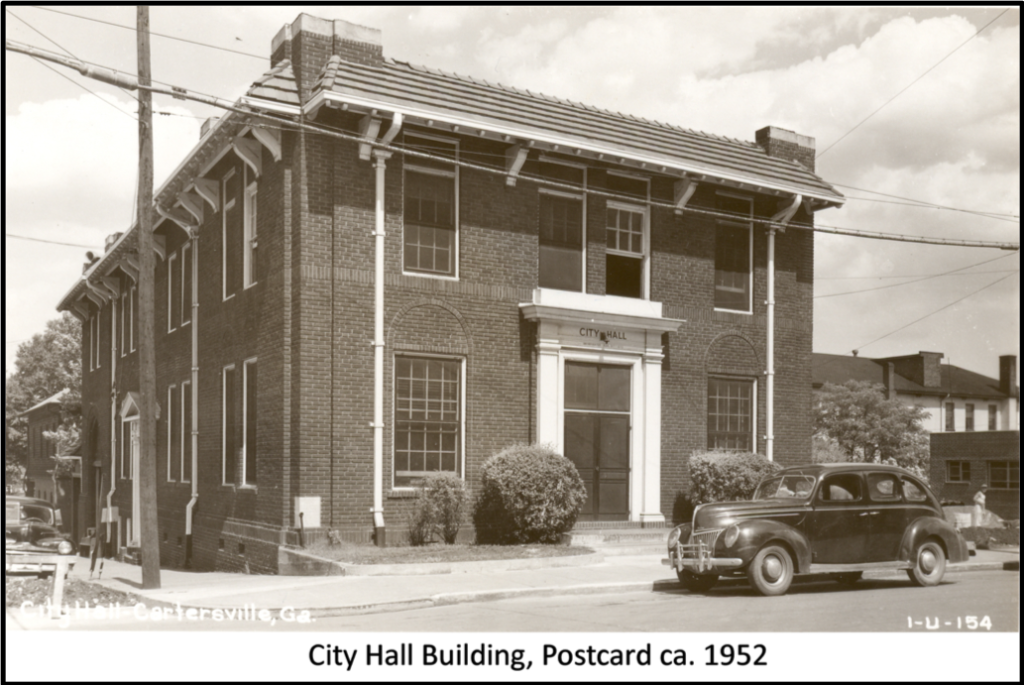
In April, 1918, the City accepted delivery of a new Model 75 American LaFrance pumper.[i] This was Cartersville’s first motorized fire apparatus, and for the first time, the department was able to produce its own water pressure for firefighting. Manpower was increased to three firefighters (including the Chief). Judson O. Eaves was hired to operate the new pumper, and served as Chief until 1923.[ii]
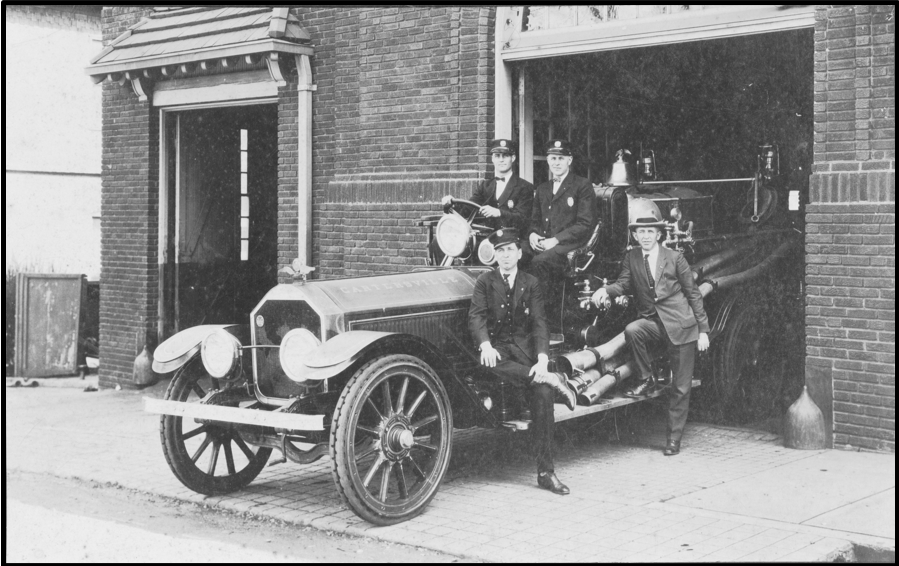
[1] Columbus Daily Sun (Columbus, Georgia) April 30, 1870, GenealogyBank, WWW
[1] The Standard and Express (Cartersville, Georgia), January 23, 1873, Microfilmed Newspapers, EVHS (Etowah Valley Historical Society)
[1] The Standard and Express (Cartersville, Georgia), January 30, 1873, Microfilmed Newspapers, EVHS
[1] City of Cartersville Council Proceedings, February 7, 1877, Cartersville City Hall
[1] City of Cartersville Council Proceedings, March 5, 1877, Cartersville City Hall
[1] Cartersville News (Cartersville, Georgia), August 10, 1905, Microfilmed Newspapers, EVHS
[1] Cartersville News (Cartersville, Georgia), January 21, 1909, Microfilmed Newspapers, EVHS
[1] Cartersville News (Cartersville, Georgia), January 21, 1909, Microfilmed Newspapers, EVHS
[1] Cartersville News (Cartersville, Georgia), February 18, 1909, Microfilmed Newspapers, EVHS
[1] Sanborn Map of Cartersville, Georgia, March, 1909
[1] Cartersville News (Cartersville, Georgia), April 8, 1909, Microfilmed Newspapers, EVHS
[1] 1910 United States Census, Bartow County, Georgia, Ancestry.com, WWW
[1] Graham, Sam. CFD Rosters Compiled from Fire Report Books, Paid. MS Word file.
[1] Cartersville News (Cartersville, Georgia), June 15, 1911, Microfilmed Newspapers, EVHS
[1] Cartersville News (Cartersville, Georgia), January 2, 1913, Microfilmed Newspapers, EVHS
[1] Cartersville News (Cartersville, Georgia), February 9, 1911, Microfilmed Newspapers, EVHS
[1] The Bartow Tribune (Cartersville, Georgia), January 8, 1914, Microfilmed Newspapers, EVHS
[1] The Bartow Tribune , (Cartersville, Georgia), September 10, 1914, Microfilmed Newspapers, EVHS
[1] Cartersville News (Cartersville, Georgia), February 8, 1915, Microfilmed Newspapers, EVHS
[1] Cartersville News (Cartersville, Georgia), March 11, 1915, Microfilmed Newspapers, EVHS
[1] The Bartow Tribune (Cartersville, Georgia), January 6, 1916, Microfilmed Newspapers, EVHS
[1] The Bartow Tribune (Cartersville, Georgia), May 10, 1917, Microfilmed Newspapers, EVHS
[1] The Bartow Tribune (Cartersville, Georgia), April 18, 1918, Microfilmed Newspapers, EVHS [1] The Tribune-News (Cartersville, Georgia), May 3, 1923, Microfilmed Newspapers, EVHS

